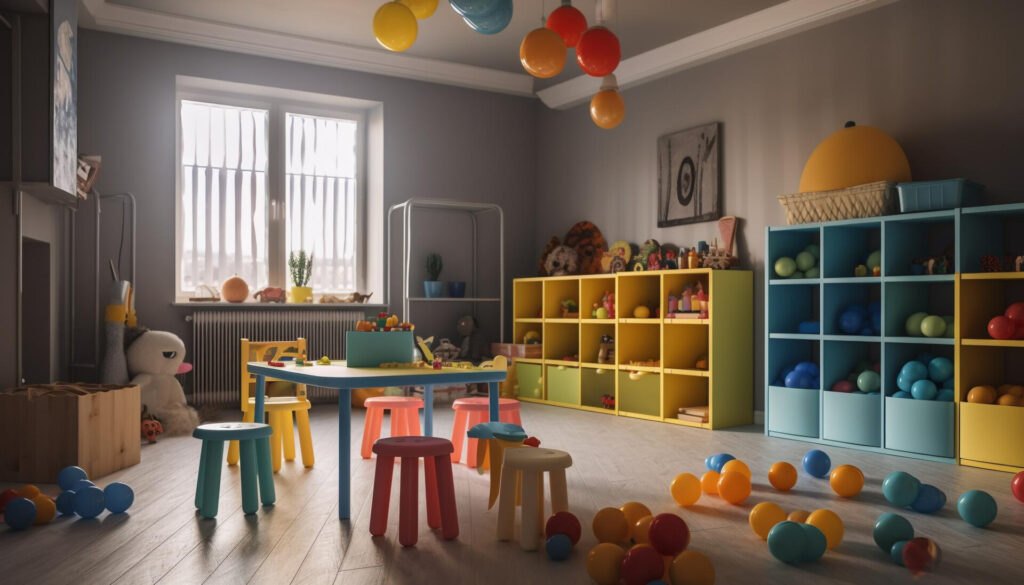In today’s world, where the diversity of approaches to children’s education is so vast, it is worth familiarizing oneself with methods that promote holistic development and allow a child to explore the world in a natural and enjoyable way. One such fascinating method is the Montessori Method, which is gaining increasing popularity among parents and teachers. In this article, you will learn what the Montessori Method is and how to effectively implement it in your child’s life.
What is the Montessori Method?
The Montessori Method was created by Italian physician and educator Maria Montessori in the early 20th century. Her approach to education focuses on allowing the child to develop naturally, based on their own interests and pace. Montessori believed that every child has an inner potential and abilities that should be revealed by creating the right environment and interactions. This method assumes that the teacher or parent acts as a guide, helping the child discover the world through exploration and experience.
Basic principles of the Montessori Method.
- Prepared environment: A key element of the method is creating an environment that fosters independence, discovery, and concentration. This space is equipped with specially designed educational materials that allow the child to explore and discover. The prepared environment should be aesthetic, organized, and tailored to the child’s needs. Furniture and materials should be easily accessible, allowing the child to freely choose what they want to play with or engage in.
- Independence and choice: Within the Montessori Method, children are encouraged to take independent actions and make choices. The child has the opportunity to select activities that interest them and make decisions at their developmental level. This helps build self-confidence, decision-making skills, and the development of practical skills.
- Individualization: The Montessori Method assumes that each child develops at their own pace. Teachers and parents should observe the child and adjust activities and materials to their individual needs and interests. The absence of pressure and a rigid program allows the child to fully utilize their potential.
- Sensory materials: A characteristic feature of the Montessori Method is the specially designed educational materials. These teaching aids are created to engage the child’s senses and encourage them to actively explore. Each material is self-correcting, which allows the child to learn and discover independently through action.
How to apply the Montessori Method in practice.
- Prepare the environment:Create a space that is full of attractive and appropriate learning materials. Furniture and educational aids should be at child height so they can use them easily.
- Choice of activities: Give the child the opportunity to choose. Prepare a variety of activities that align with their interests. This could be a math task, language exercises, or even daily activities like cooking or cleaning.
- Choosing appropriate materials: Invest in authentic Montessori materials, such as puzzles, blocks, sensory exercise materials, etc. These specially designed items develop cognitive, motor, and practical skills.
- Patience and observation: Observe the child, their reactions, and behaviors. This will help you understand what fascinates them, what challenges them, and where they need support. Remember that every child develops at their own pace.
- Allow for mistakes: In the Montessori Method, mistakes are seen as part of the learning process. Allow the child to make mistakes and learn from them instead of correcting them immediately.
- Time for focus: Give the child time to concentrate on one activity. The Montessori Method promotes prolonged, focused action, which positively impacts the development of concentration skills.
- Independence and supporting choices: Give the child the freedom to choose activities. Encourage them to make decisions, such as what they want to eat for breakfast today or in what order they want to complete tasks. This supports the development of planning and decision-making skills.
- Routine and structure: The Montessori Method does not exclude routine. Regularity and a certain structure in the child’s daily life help them feel safe and comfortable.
- Introducing gradual challenges: Adjust the difficulty level of activities and materials to the child’s development level. Gradually introduce new challenges that encourage the little one to develop skills and acquire new knowledge.
- Develop the senses: Suggest games that engage the child’s various senses. These can be activities with water, sand, paints, scents – anything that stimulates the senses and develops perception.
The Montessori Method has many advantages, such as fostering independence, creativity, and social skills in children. However, like any method, it also has its drawbacks, such as a lack of standardization or the need to adapt the environment. Before deciding to choose this method, it is worth understanding its nature well and adapting it to the individual needs and preferences of the child. Regardless of the choice of educational method, the most important thing is to support and inspire the child in their educational and emotional development.
Advantages of the Montessori Method.
Individual pace and style of learning.
One of the main advantages of the Montessori method is that it allows children to learn at a pace that best suits their individual abilities and needs. In a Montessori classroom, children have the opportunity to choose their activities and work on them when they are ready. This fosters the development of self-discipline, concentration, and independent thinking.
Independence and responsibility.
In the atmosphere of the Montessori method, children are encouraged to make independent decisions and take actions. This helps in developing the ability to take responsibility for their actions and teaches time management. Children learn to plan their tasks and carry them out on schedule, which is an extremely valuable skill in later life.
Active role of the student.
In the Montessori method, the teacher acts as a guide rather than a conductor. Children are encouraged to independently explore educational materials and discover knowledge through practical activities. This helps develop creativity, curiosity, and problem-solving skills.
Social and emotional development.
The Montessori method places a strong emphasis on the social and emotional development of the student. Collaboration in age-diverse groups teaches children empathy, communication, and cooperation. Children learn to resolve conflicts, respect others, and express their feelings in a healthy way.
Diverse educational materials.
Classic Montessori materials are carefully designed to engage the senses and develop specific skills. With a variety of educational tools, children have the chance to learn through practical activities and manipulations, which promotes better knowledge retention.
Disadvantages of the Montessori Method.
Lack of standardization.
One of the main criticisms of the Montessori method is the lack of standardization. Each school or teacher can interpret and implement it somewhat differently. This can lead to inequalities in the level of teaching between different institutions, which can be problematic if a child transfers to a traditional school.
Need for an appropriate environment.
The Montessori method requires a specially prepared environment that is tailored to the needs of children. This can be costly and time-consuming, especially if parents want to implement this method at home. The lack of appropriate educational tools can weaken the effectiveness of the method.
Less rigid structure.
For some children and parents, the absence of a strict structure and lesson plan can be problematic. Some children need clear guidelines and routines to learn effectively. The Montessori method, focusing on individual pace, may not be suitable for all students.
Preparation for standardized tests.
In some educational systems, where standardized tests are an important element of assessment, the Montessori method may be criticized for not preparing students for this type of examination. Focusing on exploration and a practical approach may not always ensure that children will be ready to handle traditional tests in the future.
Need for specialized teachers.
Education according to the Montessori method requires teachers with special skills and knowledge. Not every educator is able to effectively implement this method, which can lead to difficulties in finding suitable teachers.
Lack of standardized assessments.
The Montessori method does not focus on traditional grades and tests. While this may help reduce stress in children, some parents and students may feel the absence of a clear way to measure progress.
Making a decision about choosing an educational method for your child is a personal choice that depends on the values, beliefs, and needs of the family. The Montessori method can be an intriguing option for those who value personal development and social skills, but one must also be prepared for certain challenges associated with it.


